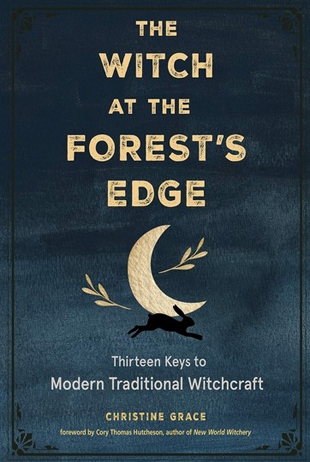The nature-focused rituals and practices of witchcraft have steadily grown in popularity in North America since the 1950s, and the animism native to these native-inspired practices has been increasingly popular in all people and religious traditions over the last decade.
Animism sees souls in animals, plants, natural processes, and inanimate objects. Christine Grace, who holds graduate degrees in theology and mental health counseling from Vanderbilt University, says “The ideas in this book are an invitation to all the animists, ancestor worshipers, magic seekers, and wild at heart.” She explains that her version of these practices is grounded in “ideals of inclusive, broad leadership within a green, animist, shamanic, and traditional path. We strive for deep, transformative practice combined with thoughtful mediation of group dynamics.” I suspect she will find readers beyond those who are already involved in witchcraft.
Her book is full of rituals and practices that are easy to apply to a busy, ordinary life. She aims primarily at those who desire to understand spellcraft, divination, ritual observances, and hedgeriding (spirit flight or shamanism).
The basic starting point is animism — as the author puts it, “The world is enchanted, filled with the whisperings of spirits.” The book then offers ways of being in a living relationship with those spirits. These include the use of offerings, art, dreams, visiting holy places, meditation, devotional elements and ritual practices, looking to ancestors as a community, putting intuition to use, and the construction or application of spirit houses. Questions for reflection and short practice suggestions are sprinkled throughout each chapter.
There are also chapters on “Cultivating Spirit Senses” (ch. 5), the green and local priorities of witchcraft (ch. 10), and “Magical Ethics” (ch. 13). In the green chapter, there are practices designed to help you live more intimately with the natural world, such as this:
“Name the moons: Sometimes the thirteen full moons in a year are given names that reflect seasonal occurrences at that time. This is an ancient practice reflected in names both from European cultures and from a number of Native American nations. For example, depending on where you live, the full moon in June might be called the Strawberry moon because that’s about the time that strawberries are ripe there. This creates thirteen mini-seasons following a lunar calendar. Name the moons where you live to create your own lunar calendar.”
Christine Grace summarizes: “Our way of witchcraft is not inherently religious, although all are encouraged to reflect on their relationship with the idea of gods. Some draw on the traditions of recent ancestors, such as Christian folk magic; some reach back to the gods of the ancients; and still others remain agnostic. We are all united by the understanding that everything has a spirit, and the world is infused with magic.”
